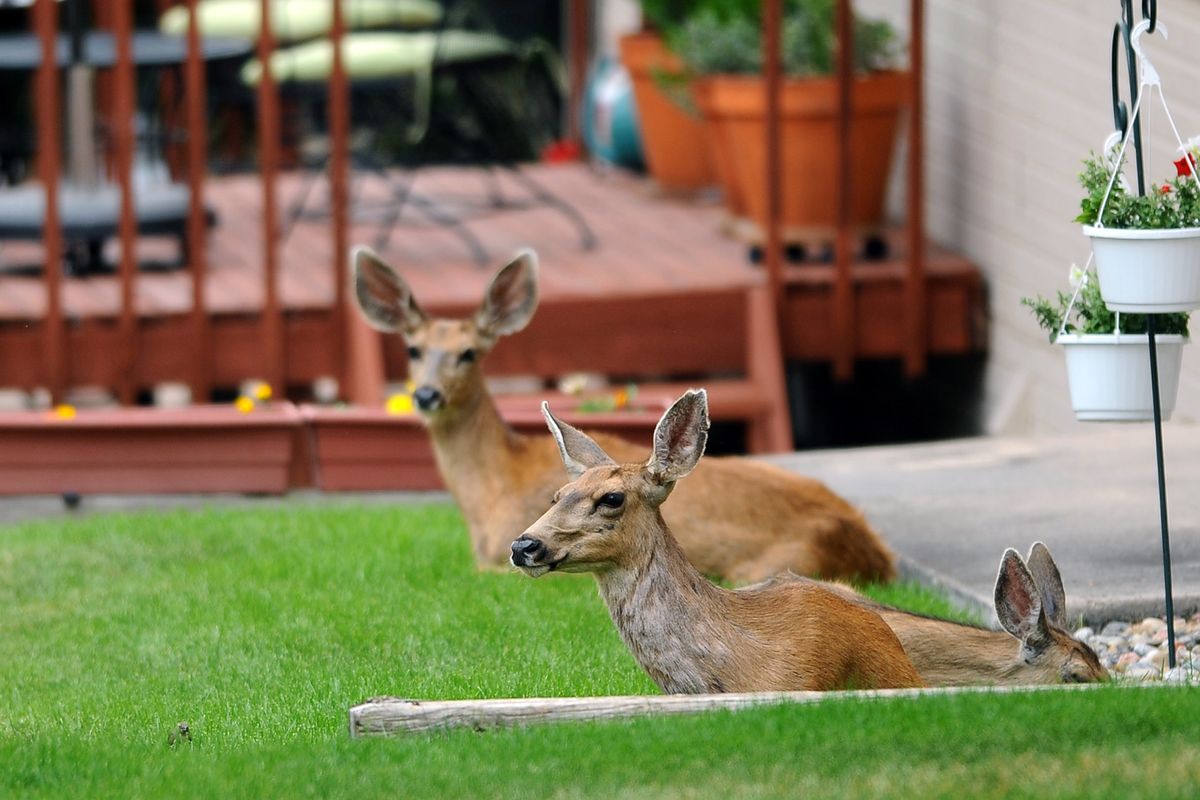Wildfire victims crowd shelters
Shifting winds confound efforts to fight Colorado blaze

COLORADO SPRINGS, Colo. – Fire crews fought to protect the U.S. Air Force Academy and residents begged for information on the fate of their homes Wednesday after a night of terror sent thousands of people fleeing a raging Colorado Springs wildfire.
More than 30,000 have been displaced by the fire, including thousands who frantically packed up belongings Tuesday night after it barreled into neighborhoods in the foothills west and north of Colorado’s second-largest city. With flames looming overhead, they clogged roads shrouded in smoke and flying embers, their fear punctuated by explosions of bright orange flame that signaled yet another house had been claimed.
“The sky was red, the wind was blowing really fast and there were embers falling from the sky,” said Simone Covey, a 26-year-old mother of three who fled an apartment near Garden of the Gods park and was staying at a shelter. “I didn’t really have time to think about it. I was just trying to keep my kids calm.”
Wilma Juachon sat under a tree at an evacuation center, wearing a mask to block the smoke. A tourist from California, she was evacuated from a fire near Rocky Mountain National Park last week and, now, from her Colorado Springs hotel.
“I said I hope it never happens again, and guess what?” Juachon said.
Constantly shifting winds challenged firefighters trying to contain the 29-square-mile Waldo Canyon blaze and extinguish hot spots inside the city’s western suburbs. The National Weather Service reported 60 mph winds and lightning above the fire Wednesday afternoon.
“It won’t stay in the same place,” incident commander Rich Harvey said.
Some 3,000 more people were evacuated to the west of the fire, Teller County authorities said Wednesday.
Meanwhile, the White House said President Barack Obama will tour fire-stricken areas of Colorado on Friday and thank firefighters battling some of the worst fires to hit the American West in decades.
The full scope of the fire remained unknown. So intense were the flames and so thick the smoke that rescue workers weren’t able to tell residents which structures were destroyed and which ones were still standing. Steve Cox, a spokesman for Mayor Steve Bach, reported that at least dozens of homes had been consumed, though he had no more precise figure.
Indeed, authorities were too busy Wednesday struggling to save homes in near-zero visibility to count how many had been destroyed in what is the latest test for a drought-parched and tinder-dry state. Crews also were battling a deadly wildfire in northern Colorado and another that flared Tuesday night near Boulder.
Carey said officials had no plans to release the numbers of homes destroyed, insisting residents have a right to be told first, in private.
FBI spokesman Dave Joly said federal investigators are working closely with local and state law enforcement to determine if any of Colorado’s fires were deliberately set or resulted from criminal activity. He did not elaborate.
The Waldo Canyon Fire burned about 10 acres along the southwest boundary of the Air Force Academy campus. No injuries or damage to structures, including the iconic Cadet Chapel, were reported. With 90 firefighters battling the flames, Academy Superintendent Lt. Gen. Michael Gould said 1,500 cadets taking summer classes and more than 1,000 freshmen arriving today will be safe – with campus ceremonies or housing to be moved away from the fire-hit area or off-campus if needed.
Four firefighting bulldozers were heading into the academy Wednesday.
The Red Cross struggled to accommodate victims at its shelters, with space enough for perhaps 2,500 people. Most evacuees were staying with family and friends.
Colorado wasn’t the only state affected, as several fires burned throughout the West. Tom Harbour, director of fire and aviation management for the U.S. Forest Service, said that with several fires burning, there is competition for firefighting resources, but “we’re still at a point where we’ve got lots of available assets to mix and match on individual incidents.”
“With over 10,000 firefighters in the Forest Service and the ability to get over 700 aircraft of all types, we’re feeling cautiously confident when you look at the season as a whole,” Harbour said.
Among other western fires:
• A central Utah wildfire has destroyed at least 56 structures, mainly homes, and continues to burn with little containment, authorities said Wednesday. Officials expected the damage estimate to rise considerably as they continue their assessment of the fire-ravaged area between Fountain Green and Fairview and north across the Utah County line.
• Wildfires that have torched more than 200 square miles and burned dozens of homes in southeastern Montana spread farther Wednesday, with additional evacuations ordered after a blaze south of Roundup jumped a perimeter line built by firefighters. The growing Dahl fire, which has burned more than 60 homes by one estimate, forced an unknown number of residents to leave their homes near its southern flank, on top of an estimated 600 people evacuated the day before.
“That’s one of the most dangerous fires in the history of Montana,” Gov. Brian Schweitzer said.
• A wildfire in the Bridger-Teton National Forest has grown from about 2,000 acres to 12,000 acres, or nearly 19 square miles, officials said Wednesday.